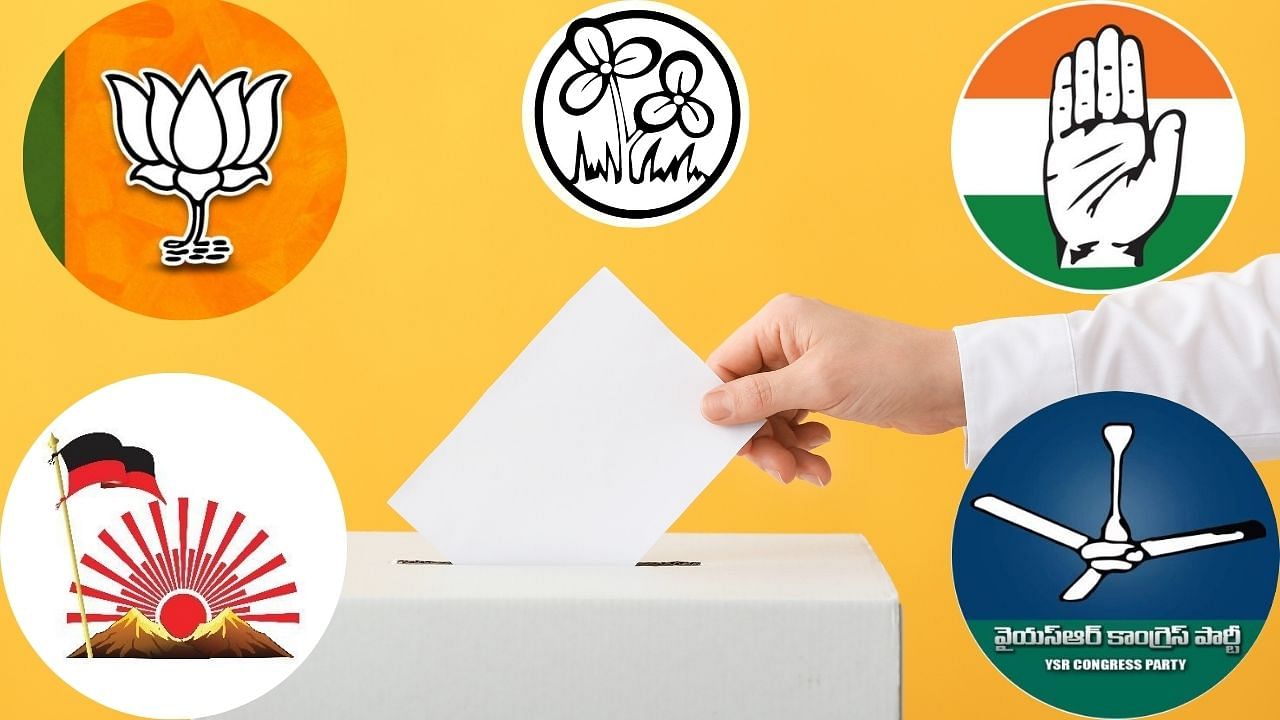
Illustration showing a person casting their vote with various political party logos visible.
Credit: Facebook and X
India goes to polls this April to elect its next prime minister. Voting will take place in seven phases and results will be declared on June 4.
In the 2024 Lok Sabha elections Narendra Modi is eyeing a third term in office, as the Bharatiya Janata Party (BJP) led National Democratic Alliance (NDA) look to take on a consolidated opposition in form of the Indian National Developmental Inclusive Alliance (I.N.D.I.A.).
While the saffron wave has promised 'Abki baar 400 paar' (This time they intend to secure over 400 seats in the Parliament) here is a look at how the parties fared in terms of vote share in the 2019 general election.
BJP was the biggest victor securing 303 seats while Congress came a distant second managing only 52 seats.
Notably, in the 2019 elections the Shiv Sena and Nationalist Congress Party (NCP) remained undivided. Since then, Eknath Shinde has split and taken the party name for himself, while founder Balasaheb Thackeray's son, Uddhav, has formed his own group Shiv Sena (UBT). In similar scenes in Maharashtra, Ajit Pawar, dissented against his uncle and NCP founder Sharad Pawar, to head to the NDA fold.
While Ajit Pawar has taken the NCP name and symbol, Sharad Pawar looks to start anew under the NCP (SP) party name and the 'man blowing the turha' (man blowing a trumpet) symbol.
Elsewhere, the opposition has agreed to seat-sharing in some parts, but notable parties like TMC and AAP are deciding to go it alone in Bengal and Punjab respectively, believing their prospects of contesting solo to be better.
Polling dates are on April 19 and 26, May 7, 13, 20, and 25, and June 1. Assembly elections for the states of Andhra and Arunachal Pradesh, Sikkim, and Odisha will be held at the same time, along with bye-polls for 35 seats in 16 states.